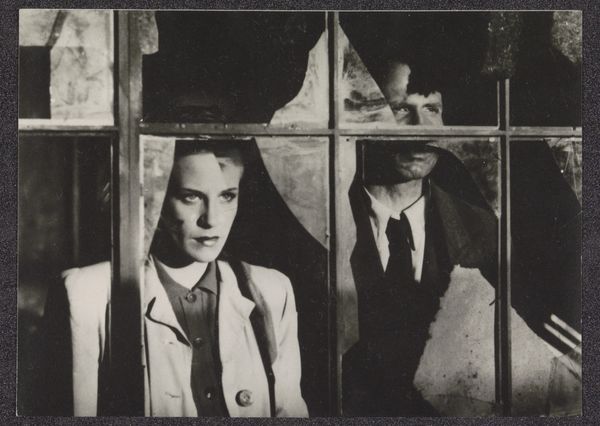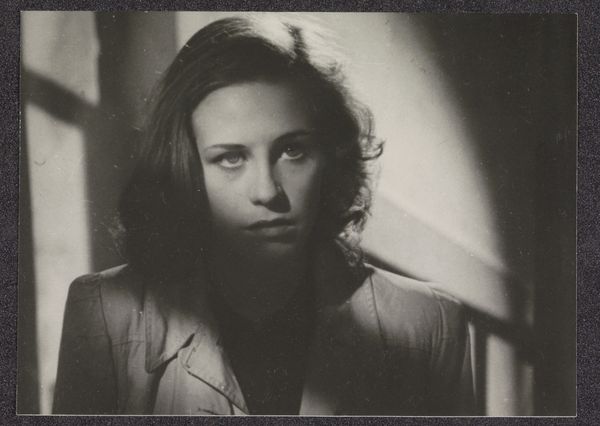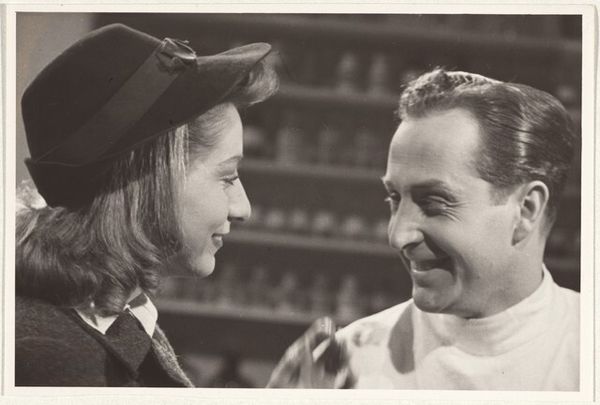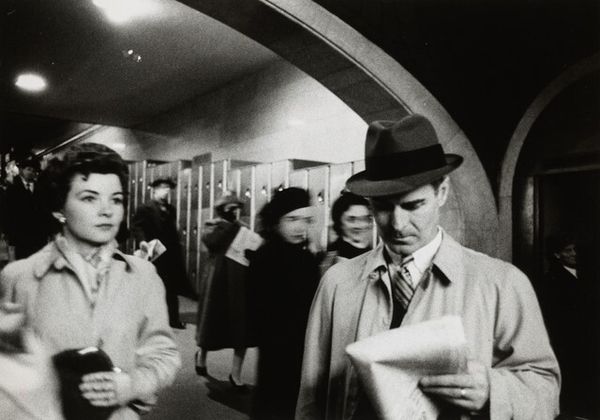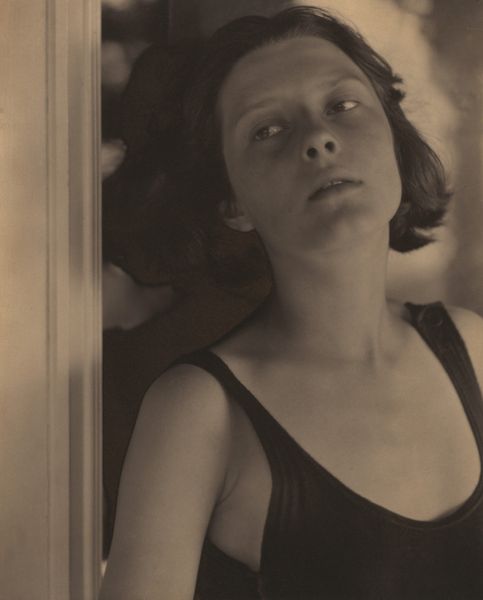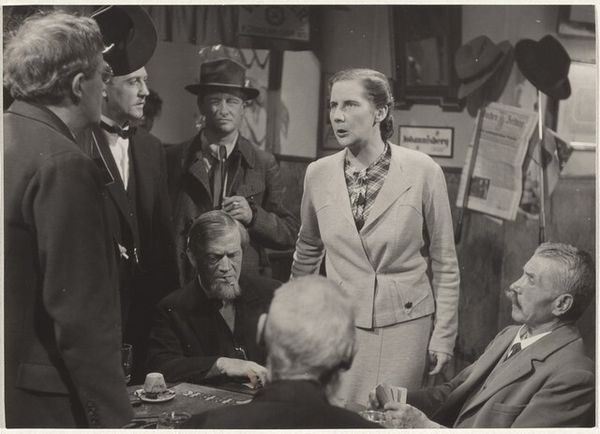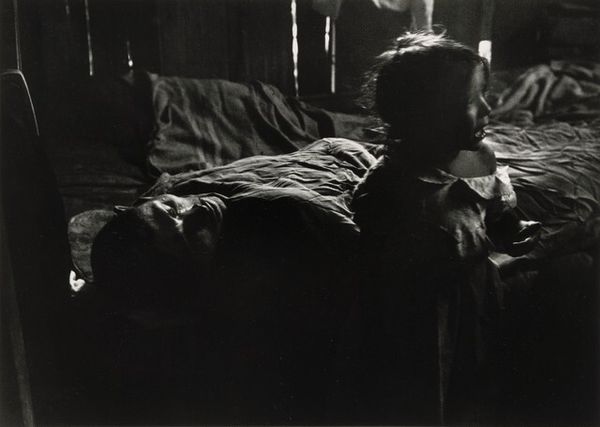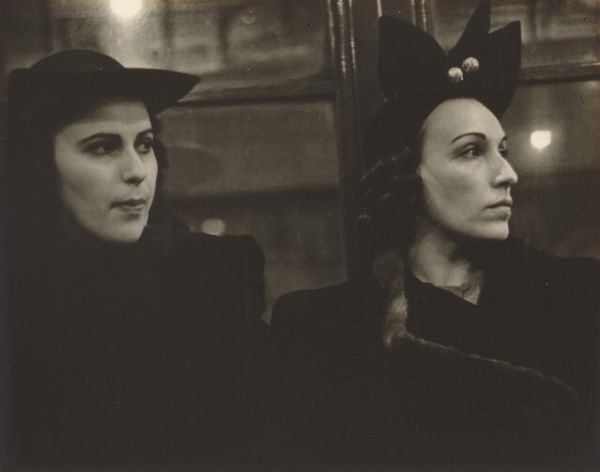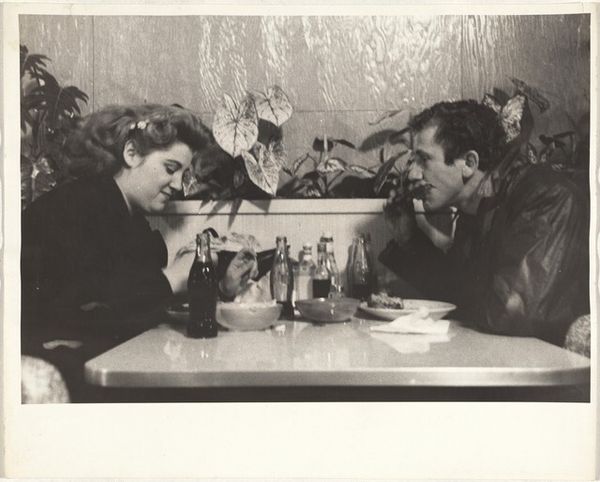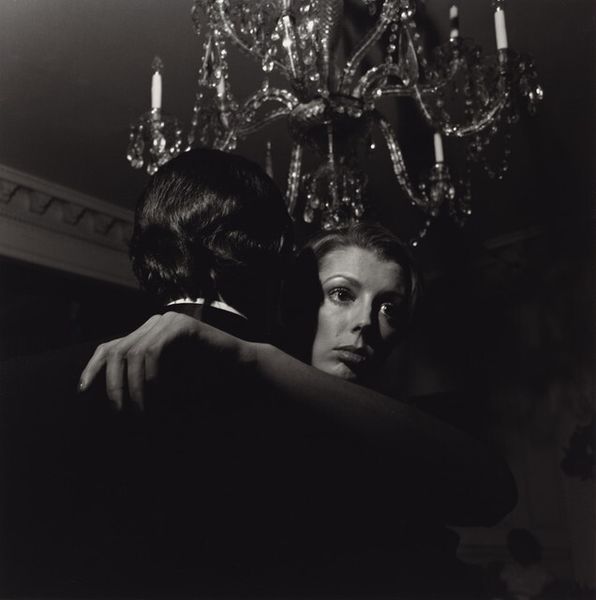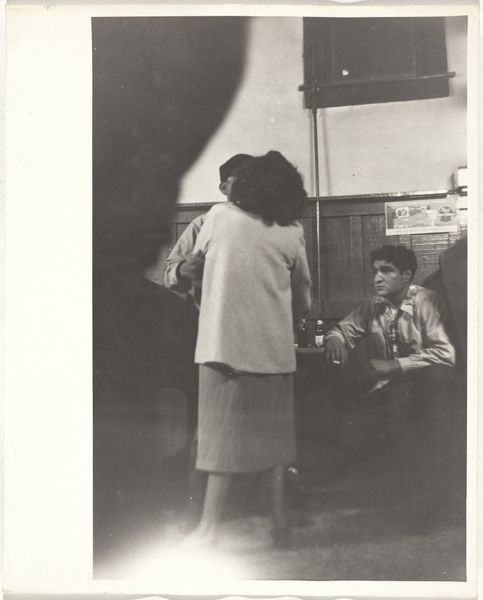
Dimensions: height 130 mm, width 180 mm
Copyright: Rijks Museum: Open Domain
Curator: I find myself completely drawn into the emotional gravity of this image. It’s like a still life, suspended in time. The dramatic light…it tells a whole story. Editor: Indeed. What we're looking at here is a gelatin silver print from 1946, a film still entitled "Die Mörder sind unter uns", or "The Murderers Are Among Us." It comes from a significant period in post-war German cinema. Curator: "The Murderers Are Among Us”… even the title chills me. I can feel that despair. The woman’s expression is powerful—she’s staring beyond us, haunted. Editor: Exactly. In examining the production of this image, we see how photography, especially stills like this one, served as crucial material evidence in grappling with collective trauma. Consider the composition, the high contrast… the processing itself would have been a deliberate act to evoke that unease, shaping the film's narrative and reception. Curator: The man is enshrouded, isn’t he? Almost completely consumed by shadow. There’s a visual tension between them— she, illuminated, seemingly aware; he, submerged in darkness, perhaps unaware or choosing to remain hidden. What a clever trick with the light... how it isolates her while hinting at the complex motives and inner darkness surrounding him. Editor: It also helps show the socio-political environment following World War II, where Germany faced immense moral and material crises. Consider that gelatin-silver printing was a widespread technique – an accessible mode for dissemination, which would have been vital for circulating such narratives quickly. That the film and photographs served a certain, maybe propagandistic, purpose cannot be overlooked. Curator: Ah, yes. Propaganda in that way of making meaning from all this ruin. Even in stillness there can be such dynamism! You feel that raw, fractured landscape – the personal and the public histories entangled… and it all boils down to the choices around processing and material circulation as you say. Editor: Precisely. Thinking about those choices helps me contextualize the image more fully within post-war social discourse. Thank you for highlighting its power. Curator: And thank you. Your explanation has provided a grounded view into the depths that a still, at first glance, might seem only to suggest. I’ll see this in new ways going forward.
Comments
No comments
Be the first to comment and join the conversation on the ultimate creative platform.

